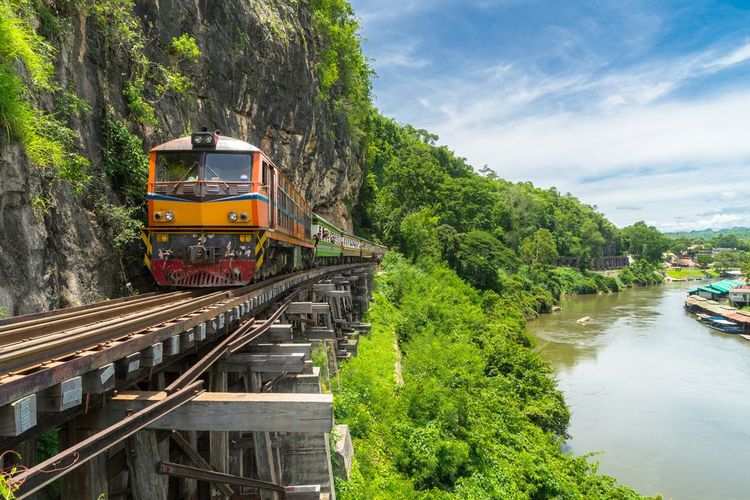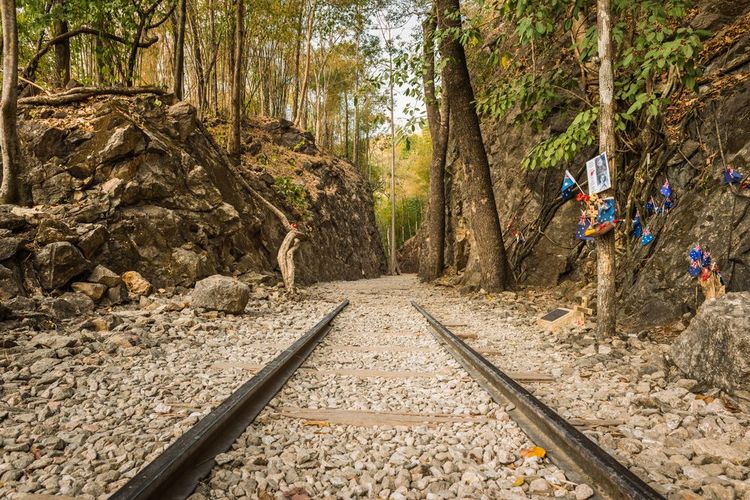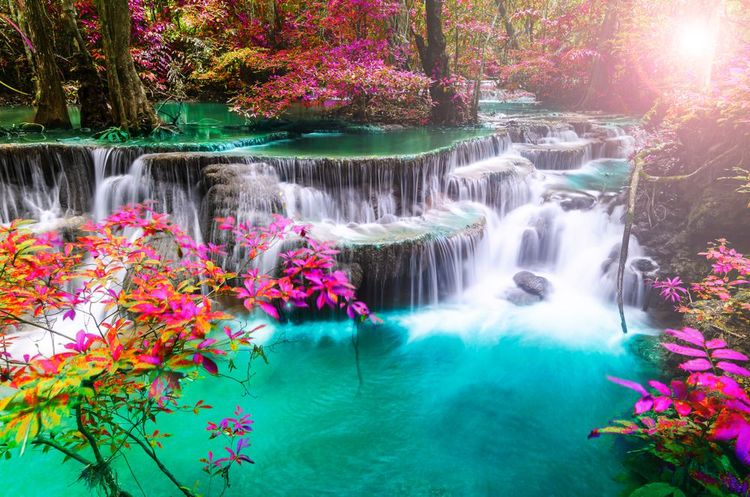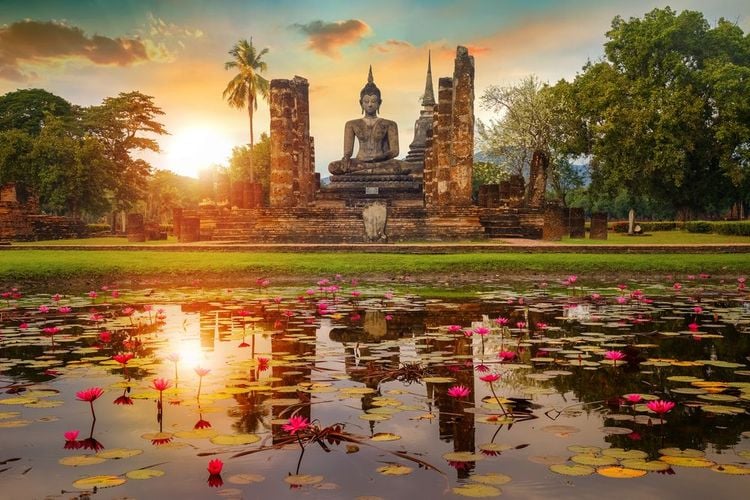The province still remembers its tragic history during the Japanese occupation and the construction of the famous Bridge over the River Kwai. To understand its history, we need to go back to 1941, when the Japanese army invaded Thailand with the aim of taking over Malaysia. A year later, the Japanese army built a railway linking Thailand to Burma. Around 30,000 Western prisoners and 100,000 Asian labourers built the 415 km of track.
The conditions of forced labour and malaria caused thousands of deaths. In order to meet the deadlines, some Japanese soldiers also got involved. During this period, the bridge was bombed by the Allies, and a monument and two museums have been built to commemorate this tragic story.
The Thailand-Burma Railway Museum (inaugurated in March 2003) and the Jeath War Museum tell the story of the bridge.
The Death Railway and an Allied cemetery from the Second World War also bear witness to this historic period.











